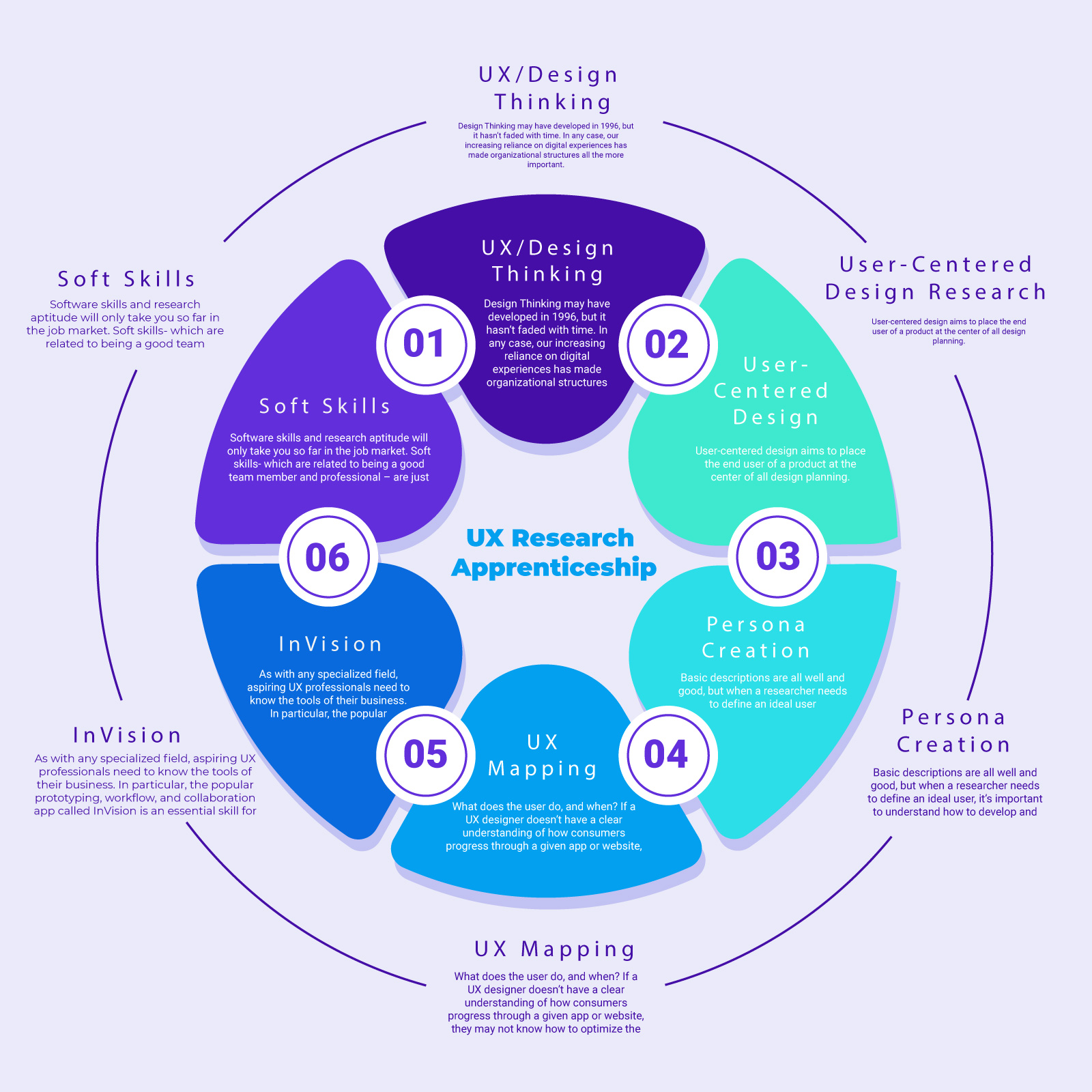What is UX Research?
The act of identifying your customers’ behaviors, objectives, and demands through observing, task analysis, and some other sorts of user input is known as User Experience (UX) research.
User Experience (UX) Designers collaborate with other designers to create user-friendly software and hardware. This necessitates a thorough understanding of the research, development, evaluation, and cross-discipline collaboration.
Goals of UX Research
UX research aids companies and businesses in achieving the following goals:
For new products, sites, mobile apps, and prototypes, gain a better understanding of the user experience.
During the product development process, test many parts of developing products to make educated decisions.
Discover, improve, and assess the real-world user experience.
Before conversion, understand each user contact.
Initially in a product’s life cycle, master the layout and experience.
Steps for Conducting UX Research
There are five essential phases to performing user experience research:
Objectives
What information do you need to gather about your users and their requirements?
Hypothesis
What do you assume you know of your users already?
Methods
What research methodologies should you utilize based on your timeline, project kind, and research team size?
Conduct
Begin gathering data on your users, their interests, and their requirements using the research method(s) you’ve chosen.
Synthesize
Analyze the information you gathered to fill in the gaps in your knowledge, test your hypothesis, and develop a strategy for improving your product based on user input.
Don’t make the mistake of assuming you can test your application, website, or product on your own; skilled UX researchers know that the ideal person to evaluate your product is the client for whom it was designed.
Methods of user experience research
The type of UX research approach you use will be determined by the type of product you’re creating, your timeline, the size of your research team, and the environment in which you’re working. When deciding which approach is ideal for your project, there are three main research dimensions to consider:
BEHAVIORAL VS. ATTITUDINAL
The terms “attitudinal” and “behavioral” refer to what individuals say and do, respectively; what people say and do are frequently very different. Because it measures people’s stated views and needs, attitude research is frequently utilized in marketing. In product design, however, what customers do is more important. A/B testing, for example, gives visitors multiple versions of a site at random to see how site design affects conversion and behavior.
Eye-tracking is another behavioral tool that helps researchers analyze how humans engage and physically engage with an interface design.
QUANTITATIVE AND QUALITATIVE ANALYSIS
Quantitative research projects quantify data and extrapolate outcomes from a sample to the entire population. They usually work with a large variety of sample examples and have an organized approach to questioning. Quantitative research is more theoretical and uses measuring equipment like surveys or analytics to acquire data about how participants use a product. This form of investigation seeks to answer questions such as “what,” “where,” and “when.”
In contrast, qualitative research approaches obtain information about people by monitoring them directly, such as in focus groups or field investigations. Qualitative research tries to obtain a sense of the underlying causes and motives behind customer behavior to better comprehend the human side of data. Low groups of diverse (rather than representative) examples are used, and the interviewing process is less regimented. The “how” or “why” of customer behavior is best addressed using qualitative methodologies.
APPLICATION CONTEXT
Context of use analysis allows researchers to know the user experience by gathering and analyzing data on users, the desired use of the application, the tasks they execute with the application, and the technological constraints given by the program. Surveys, focus groups, site visits, interviews, and observational studies are commonly used to gather data for the context of use study.
One way for determining the most significant features of a system or software in the context of using the program or product is the context of use analysis. This type of research is usually conducted early in the product lifespan and continues as data reveal which aspects of the products and user experience are most important.
The importance of user research
UX research is essential because it prevents you from spending time, money, and effort creating the incorrect product or solution. Furthermore, explicitly asking your consumers what they value in a product prevents you from making incorrect assumptions during the design process. As a result, instead of having to alter the product later when clients are unsatisfied, you can design it correctly the first time.
UX research is beneficial to all aspects of your business and provides tangible results for your product, users, and bottom line.
BENEFITS OF THE PRODUCT
You may learn how and when customers like to use a product, what pain points your product will tackle, and how to enhance your product design by asking your consumers for direct feedback about a possible product.
BENEFITS TO THE USER
Unbiased feedback from your most valuable source: your consumers, is what UX research is all about. This form of research is the finest resource for gaining practical product feedback because it is not influenced by investors, corporate leaders, or outside forces.
BENEFITS FOR BUSINESS
Knowing what your consumers appreciate allows you to spend less time and money repairing bad ideas, accelerates the product development process, and boosts customer happiness.
Conclusion
UX is a burgeoning discipline, and the user experience researcher’s work is becoming increasingly important. To become a UX researcher, you must first acquire the necessary skills and information, as well as understand how to perform UX research like a professional. You should also surround yourself with colleagues in the area from whom you can learn.
Overall, the importance of knowing client demands cannot be overstated, and user experience researchers will play an essential role in the future of design.




